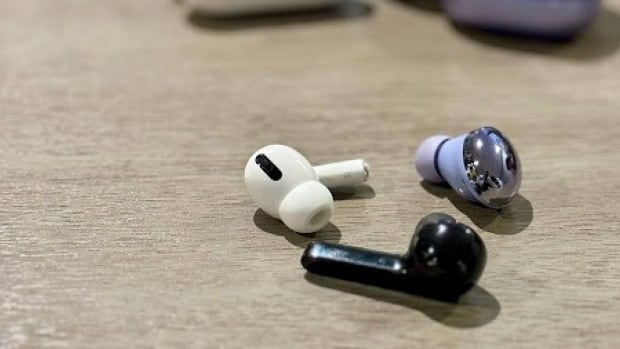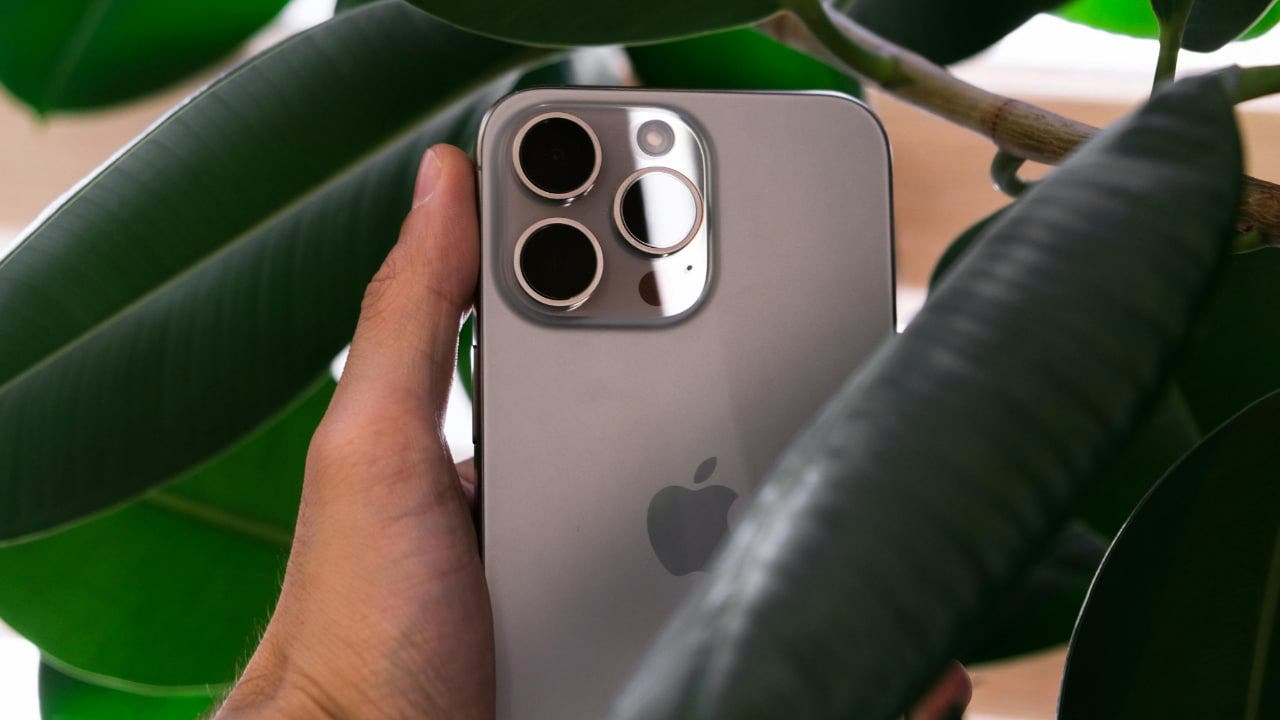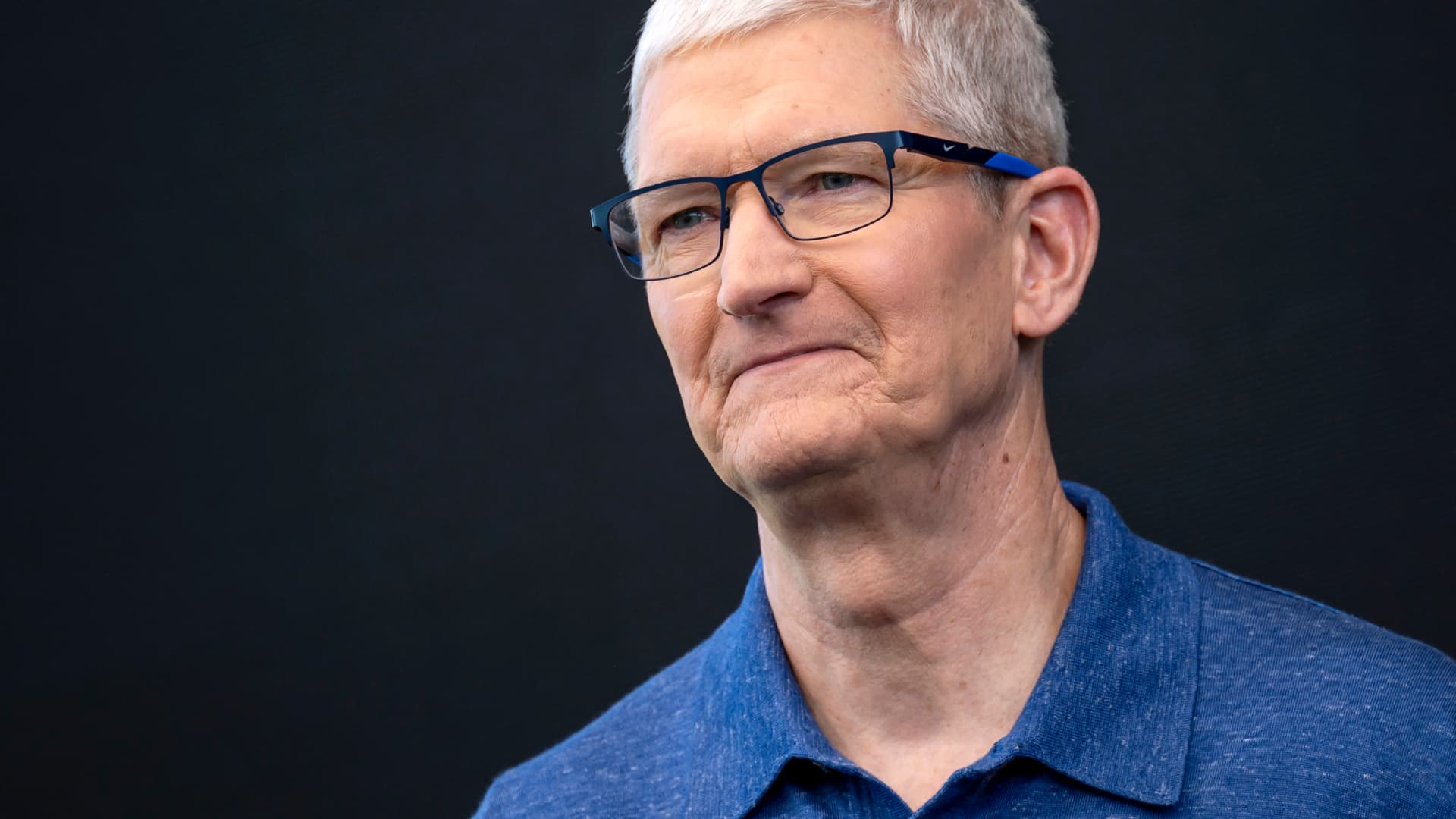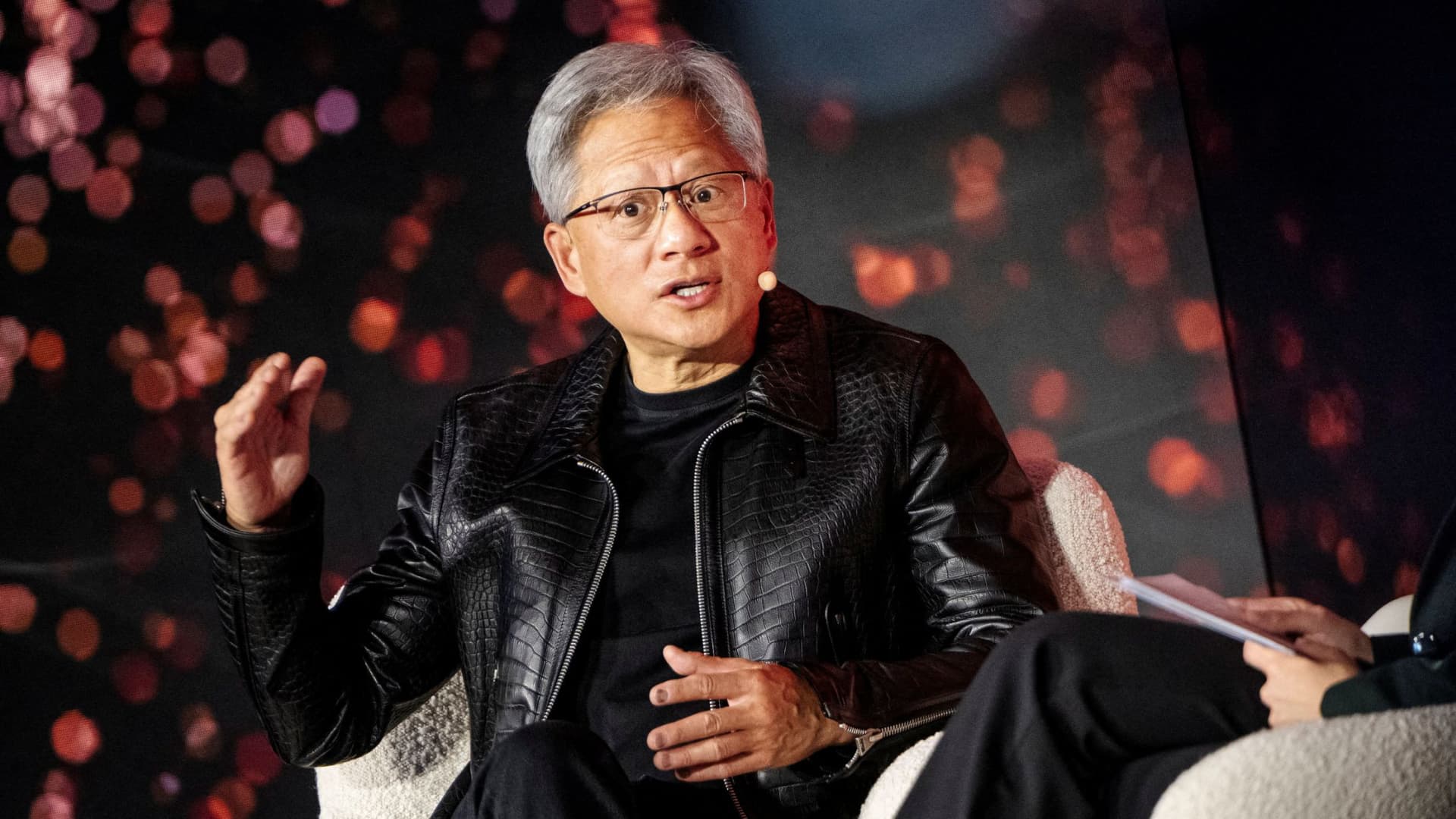Our planet is changing. So is our journalism. Keep up with the latest news on our Climate and Environment page.
Sign up here to get this newsletter in your inbox every Thursday.
This week:
- Wireless earbuds don’t have to be such a waste
- Daylighted creek brings back salmon
- What to look for in a used EV
Wireless earbuds can be built to last — if companies want them to

Last month, my wife didn’t realize an Airpod tagged along with her to the bathroom and it flew into the toilet. Groans followed. You might relate.
It speaks to the ubiquity of these earbuds in our lives — an estimated 300 million of which were sold in 2021. Apple, the market leader, has sold hundreds of millions of them since their debut less than a decade ago.
But it’s also a growing environmental problem.
Mostly glued-together, closed systems with tiny lithium-ion batteries, wireless earbuds contribute to the 62 billion kilograms of electronic waste generated every year. Worse, those batteries can be dangerous.
“We were at a recycling conference last year,” said Liz Chamberlain, director of sustainability at iFixit, a community of advocates dedicated to tech repairability. “[We] asked a whole room full of recyclers, ‘How many of you have a process for recycling earbuds with glued-in batteries?'”
No hands went up. But then she asked a different question.
“‘How many of you have had fires in the last year from something like this ending up in your shredder?’ And a whole bunch of hands went up.”
One of the problems, say experts, is even though consumers think sustainability is overwhelmingly important, technology companies don’t reflect that through extending a product’s life.
“The most sustainable thing to do is not to buy new things,” said Rishad Habib, an assistant professor with the Ted Rogers School of Management at Toronto Metropolitan University. She says tech companies design their products to be phased out through “planned obsolescence.”
But she says opportunity exists. Longer-term product guarantees, for example, could save money over time and make people feel “positive” about the brand. Tech companies could successfully charge a premium if promising a more durable product.
“It works for a luxury product,” Habib explained. “If you can communicate to customers that, hey, this is going to last a really long time.”
But the complexity of consumer technology products is a challenge. Plastic, metal, electronics and battery chemicals all fused together make it harder to evaluate how to be more sustainable.
“You need to understand your product before you can understand the environmental footprint of it,” said Aniek Baltussen, sales engineer at EcoChain, a life cycle assessment software company in Amsterdam.
Baltussen worked on a campaign for audio brand Skullcandy, for a pair of more sustainable earbuds. While it didn’t have removable batteries, it used recycled materials, reduced electronic parts and considered its emissions from production.
She says while some companies want to make progress, regulatory pressures in the EU are also helping ensure sustainability isn’t a marketing tactic.
“Some claims you cannot make without having it backed up,” Baltussen said. “And those things are really important for the future as well. So you actually know a source of why something is greener or why something is better.”
Chamberlain says she fears companies will double down on disposability in the near future, a feeling she got from a recent canvas of earbud companies at the Consumer Electronics Show in Las Vegas, in January.
“Their expectation is that when the battery stops holding a charge or something inside them gets damaged, that people will just buy a new one,” Chamberlain told CBC News from San Luis Obispo, Calif.
But she also has hope, pointing to a newly released product from Amsterdam-based Fairphone: earbuds with modular parts. The idea is to keep them longer.
“It proves that it is possible to make something this small with an easily user replaceable battery.”
— Anand Ram

Old issues of What on Earth? are here. The CBC News climate page is here.
Check out our podcast and radio show. This week, how the tiny island nation of Tuvalu is trying to hold bigger countries accountable for the effects of climate change. What On Earth drops new podcast episodes every Wednesday and Saturday. You can find them on your favourite podcast app, or on demand at CBC Listen. The radio show airs Sundays at 11 a.m. ET, 11:30 a.m. in Newfoundland and Labrador.
Check the CBC News Climate Dashboard for live updates on wildfire smoke and active fires across the country. Set your location for information on air quality and to find out how today’s temperatures compare to historical trends.
Reader feedback
Several readers responded to Rachel Sanders’s story about the greener way to dispose of used clothing. A few, including Shirley Kabachia and Heather Wallace, said they cut up old clothes and sheets as wiping cloths. “I don’t have to buy paper towels,” Wallace wrote.
For those who prefer to up-cycle their clothing, Marilyn Vaux recommends checking out the Up-Cycled Cloth Collective.
And in response to Gabrielle Huston’s earlier story on the benefits of native plants, Karen Blackman sent us a lovely photo of her indigenous garden on Vancouver Island, which includes wild cranberry, Oregon grape, Pacific ninebark, ocean spray and ferns:

Write us at whatonearth@cbc.ca.
Have a compelling personal story about climate change you want to share with CBC News? Pitch a First Person column here.

The Big Picture: Bringing back the salmon

Barrie, Ont., artist Valerie Losell sent us this beautiful pastel painting called The Hopeful, which shows salmon returning to Still Creek in Burnaby, B.C., after buried sections were uncovered — or daylighted — and rehabilitated. She emailed us after recent CBC radio and online features about uncovering buried rivers in cities across Canada, to say she was glad to know the spawning salmon are still returning. The painting itself was inspired by a photo in a story about the creek published in The Tyee in 2019. “I seem to be doing mostly political environmental awareness pieces these days,” Losell wrote. “It is how I contribute [along with donations to groups that fight climate change]… Feels minuscule, but is something.” You can see more of her paintings on her Instagram account @valerielosellart.
— Emily Chung
Hot and bothered: Provocative ideas from around the web
-
Last year, for the first time in history, renewable energy supplied more than 30 per cent of the world’s electricity, and power emissions are expected to start declining, says a new report from energy think-tank Ember.
- Climate-related disasters are hitting more people, who need funding to repair and recover their homes and lives. To fill the gaps left by insurance, many are turning to crowdfunding.
- E-waste recycling is growing, but e-waste is growing faster. Ensia takes a closer look at some ways we could make up the difference.
- Trevor Herriot, a naturalist from the Prairies, has written a lot of non-fiction about bird conservation. His latest book, The Economy of Sparrows, is his first novel. Among other things, it’s intended to give women from the Prairies a character to identify with who understands their environmental concerns.

What to look for when buying a used EV

If you’re in the market for an electric vehicle, but cringing at the prices, experts say now might be the time to buy a used model.
As the auto industry recovers from lockdown-era supply shortages, more cars — electric and gas — are sitting unsold, with new cars rolling off production lines.
“Supply is there, demand has been declining and prices are coming down,” said Baris Akyurek, vice-president of insights and intelligence for AutoTrader, on CBC Radio’s Cost of Living.
“So if you’re in the market, if you’re on the fence, [it’s] definitely a good time to be looking for a used EV.”
Used EVs on AutoTrader have more than quadrupled since 2019, according to Akyurek, with over 8,000 models available as of April. This year, the price of a used EV has dropped by 11 per cent.
Compared to all used cars on the platform, which cost on average just over $37,000, about half of the available used EVs are priced under $40,000, he said.
“What we’re seeing is an extremely reliable and low-cost-to-maintain car, so it’s a good bet for a used vehicle,” said Cara Clairman, president and CEO of EV advocacy group Plug’n Drive.
Do EV batteries last?
When it comes to EVs, perhaps the most important part of the vehicle is the battery pack that powers the motor.
That’s because the battery in an EV, like those in cellphones and laptops, loses its capacity over time and through repeated charging. That can result in reduced acceleration and lower range.
Many factors can influence that degradation, says Olivier Trescases, a professor of energy systems at the University of Toronto who studies EV battery technology and owns a used EV himself.
Extreme temperatures, both cold and hot, can cause a battery to degrade faster. So can a reliance on high-power fast chargers, as well as a person’s driving habits, like excessive acceleration.
According to data collected over approximately seven years from 21 different electrified vehicle models and published in 2020, there is an average degradation of 2.3 per cent per year.
A 2023 analysis suggests that newer models experience less degradation annually. Rapidly evolving technology is behind the shift, says Charlotte Argue, senior manager of sustainable mobility at Geotab, the company that collected the data.
“Within the vehicle, there’s thermal management to try to protect the battery, and so we’re seeing the thermal management systems improve,” she said. “That’s allowing those batteries to last longer.”
What to ask about a used EV battery
When thinking about purchasing a used EV, look at the battery’s state of health, which calculates the remaining capacity. The car’s computer may provide it, and it can be confirmed by a dealer or technician.
Clairman suggests avoiding cars with less than 90 per cent state of health, but a lower number can work for drivers with short commuting distances.
The warranty, she adds, is also crucial, noting that most vehicles are covered for up to eight years.
“That would sort of protect you from a problem with the biggest component,” she said.
Trescases suggests taking a checklist of questions with you when looking at your options to help you assess a battery’s health:
- Was the car stored in a climate-controlled area?
- Was the car used for long-distance driving? (Repeated deep discharges can have a negative impact.)
- Was it charged at home or using a fast charger?
- What is the displayed range of an EV at normal temperatures, and how does that compare to the manufacturers’ maximum range?
- “In the early days of EVs, we overestimated the amount of degradation,” said Trescases. “So I think that, in general, consumers should not be afraid to buy used EVs.”
– Jason Vermes
Stay in touch!
Thanks for reading. Are there issues you’d like us to cover? Questions you want answered? Do you just want to share a kind word? We’d love to hear from you. Email us at whatonearth@cbc.ca.
Sign up here to get What on Earth? in your inbox every Thursday.
Editors: Emily Chung and Hannah Hoag | Logo design: Sködt McNalty






